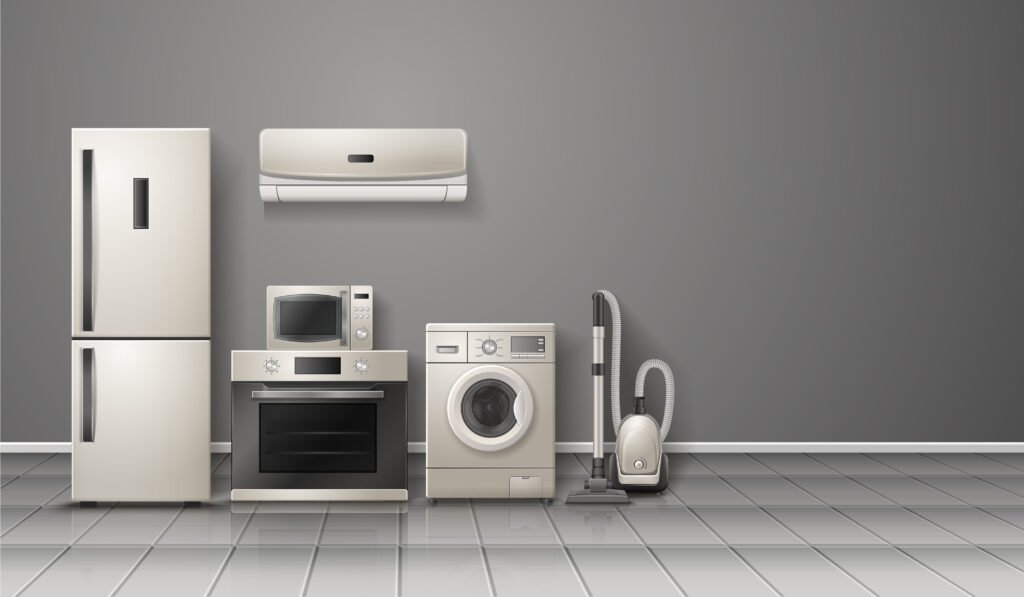If you’ve ever tried to squeeze a full laundry setup into a tight space, you know how tricky it can be. That’s why stackable washer and dryer dimensions matter so much, they can mean the difference between a perfect fit and a door that won’t close.
Whether you live in an apartment, condo, or small home, this guide will walk you through the most common dimensions, measurement tips, and what to consider before purchasing.
What Is a Stackable Washer and Dryer?
A stackable washer and dryer is exactly what it sounds like, two separate appliances designed to be stacked vertically, saving valuable floor space.
They’re popular in:
- Apartments and condos
- Small laundry rooms
- Closets converted into laundry spaces
Stackable units come in two main types:
- Full-size stackable sets – Offer the same capacity as side-by-side machines.
- Compact stackable sets – Smaller footprint, ideal for tight spaces.
Standard Stackable Washer and Dryer Dimensions
While dimensions can vary by brand and model, here are the general ranges:
| Type | Width | Height (stacked) | Depth |
|---|---|---|---|
| Full-size | 27 inches | 74–79 inches | 30–34 inches |
| Compact | 24 inches | 70–74 inches | 24–27 inches |
| Extra-compact (niche) | 23 inches | 67–70 inches | 22–24 inches |
Full-Size Stackable Dimensions
Full-size stackables are perfect if you do large loads of laundry or have a family. They usually require:
- Width: 27 inches
- Height: ~77 inches when stacked
- Depth: 31 inches or more (plus clearance for hoses and vents)
Compact Stackable Dimensions
Compact units are designed for smaller homes:
- Width: 24 inches
- Height: 72 inches on average
- Depth: 25 inches (add extra clearance for connections)
How to Measure Your Laundry Space
Getting accurate measurements is essential. Here’s how:
- Measure Width – Side to side, leaving at least 1 inch clearance on each side for ventilation.
- Measure Height – Floor to ceiling, leaving at least 2–3 inches above for hookups and airflow.
- Measure Depth – Front to back, adding at least 4–6 inches for hoses, vents, and door clearance.
- Check Doorways & Hallways – Ensure the appliance can fit through during delivery.
Venting and Clearance Considerations
- Rear clearance: At least 4 inches for hoses and cords.
- Side clearance: 1 inch per side for airflow.
- Top clearance: 2–3 inches to prevent overheating.
- Front clearance: Enough space to fully open the washer and dryer doors.
If you’re in a space without external venting, you may need a ventless dryer option.
Choosing Between Full-Size and Compact
Ask yourself:
- Do you wash large loads? → Go full-size.
- Do you have limited space? → Opt for compact.
- Is water and power hookup space tight? → Check your utility closet measurements before choosing.
Additional Features to Consider
- Energy efficiency rating
- Noise level for apartment living
- Front-load vs. top-load washer design
- Smart features like Wi-Fi controls
Tips for Installing a Stackable Washer and Dryer
- Level the floor – Uneven floors can cause vibration and noise.
- Secure the stacking kit – Prevents shifting during cycles.
- Use proper hookups – Ensure water, drainage, and venting are up to code.
- Consider professional installation – Especially if modifying venting or electrical outlets.
Common Mistakes to Avoid
- Forgetting to measure the delivery path
- Not allowing enough space for ventilation
- Ignoring electrical or water hookup requirements
- Choosing a depth that blocks doorways
Conclusion
Understanding stackable washer and dryer dimensions before you shop can save you time, money, and headaches.
Measure your space carefully, account for clearances, and match your laundry habits to the right machine size. Whether you choose a full-size set for a large household or a compact model for a city apartment, the right fit will make laundry day easier, and your space more functional.
FAQs
Q1: Will a 27-inch wide stackable washer and dryer fit in a 30-inch space?
Yes, this leaves about 1.5 inches clearance on each side, which is generally sufficient for ventilation.
Q2: Can I stack any washer and dryer?
No, you need models designed for stacking, plus a compatible stacking kit.
Q3: How tall is the average stackable washer and dryer?
Most range from 74, 79 inches tall when stacked.

